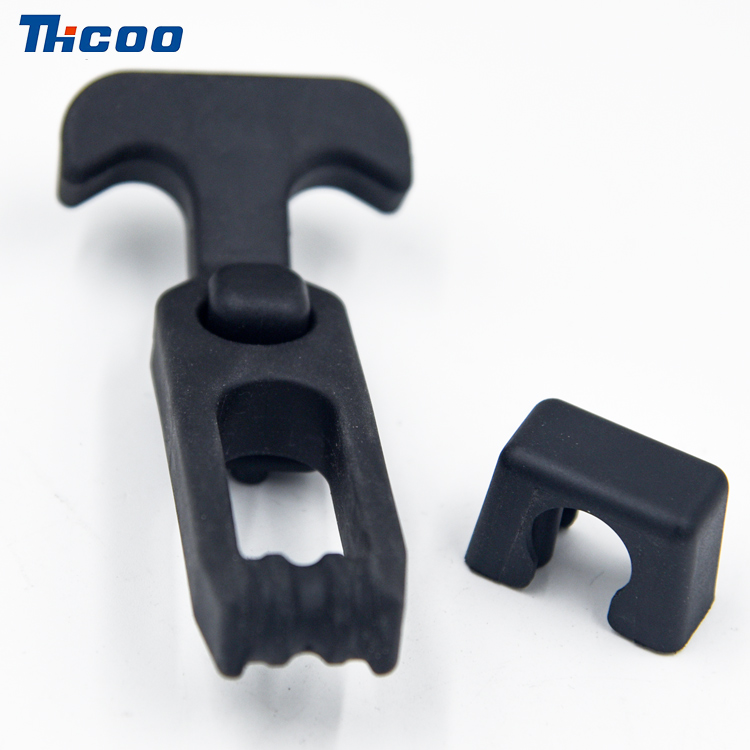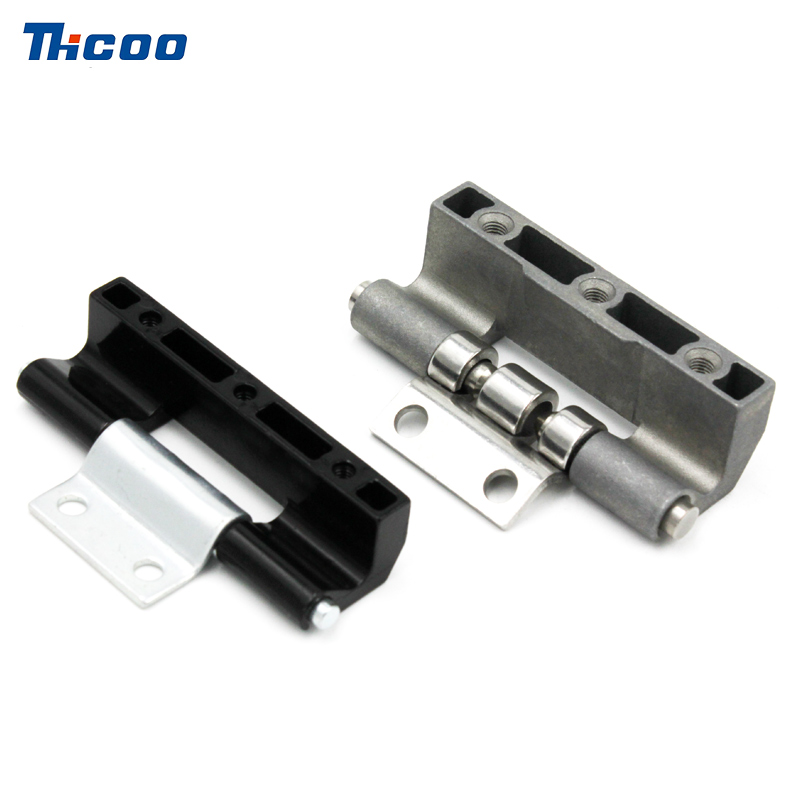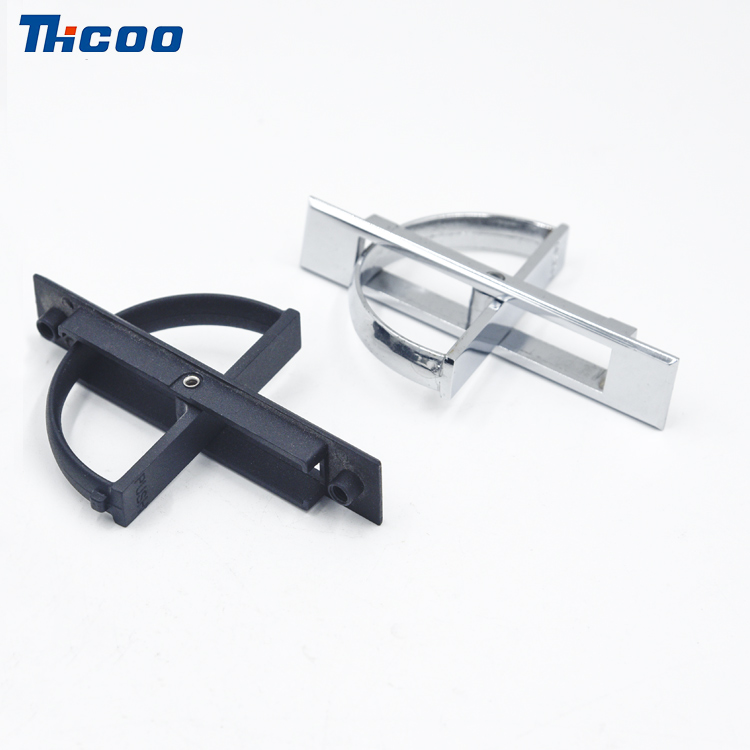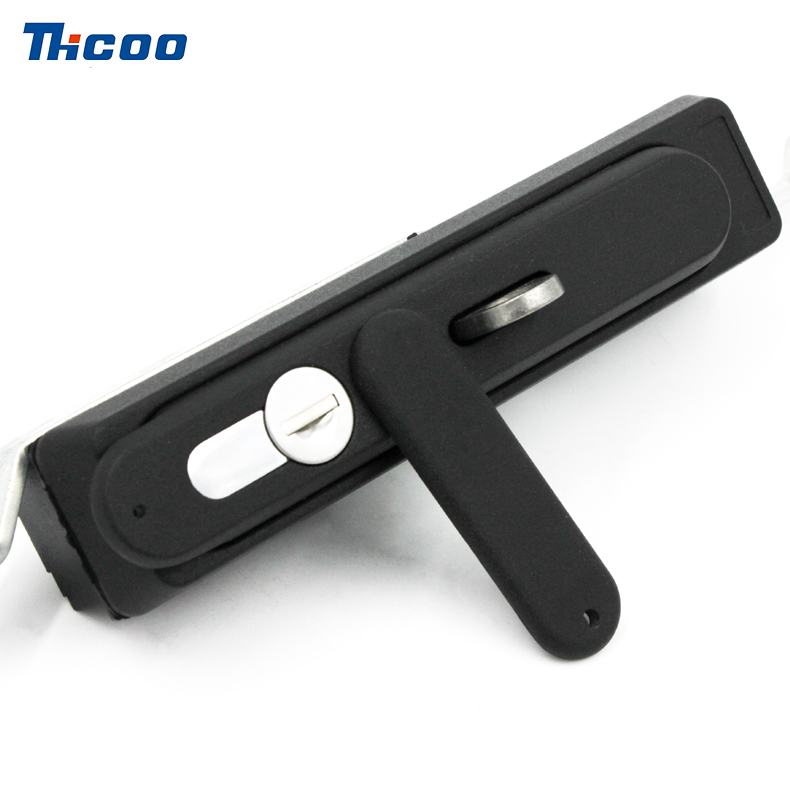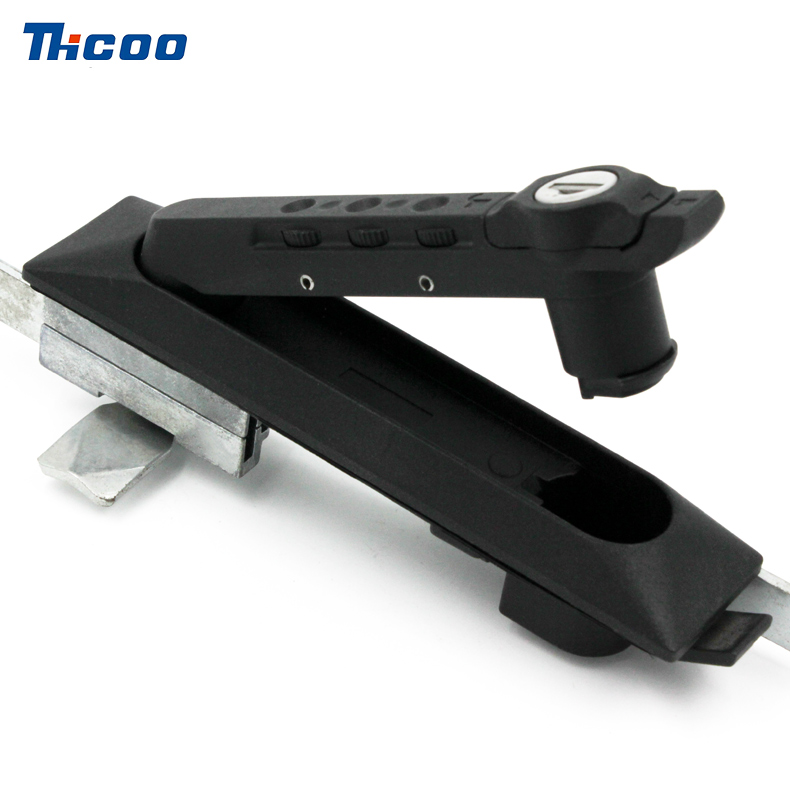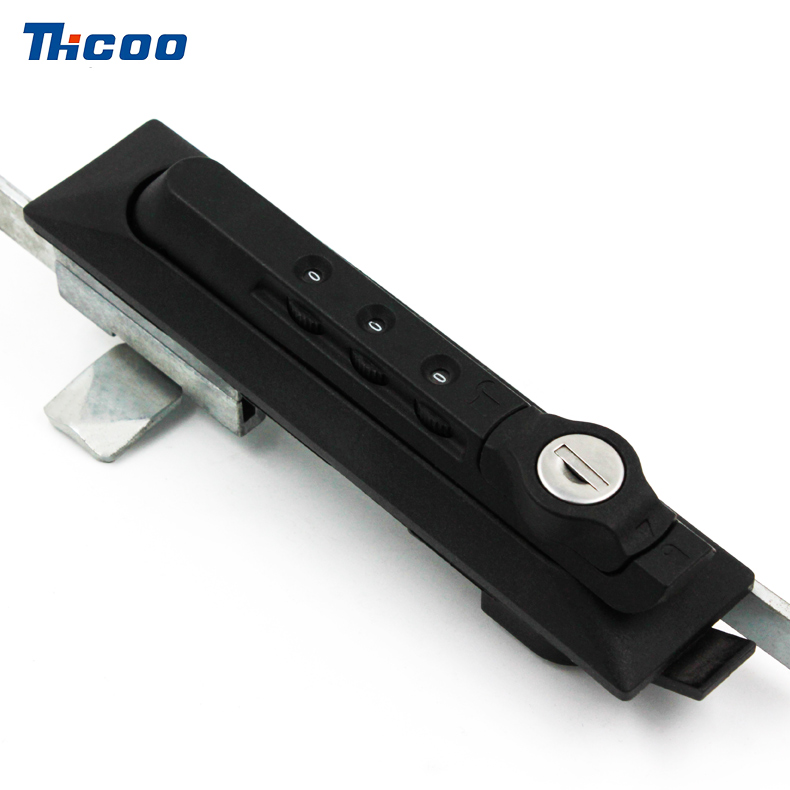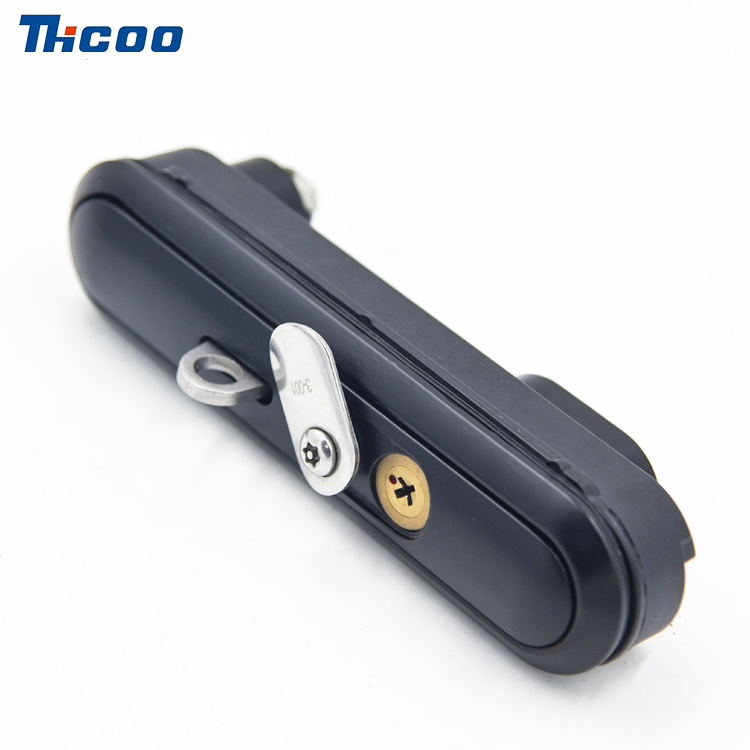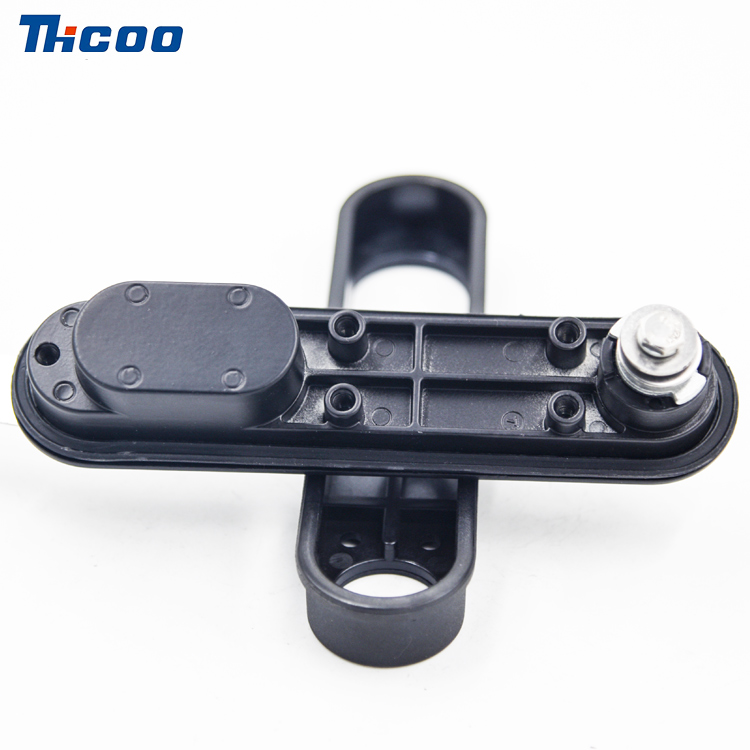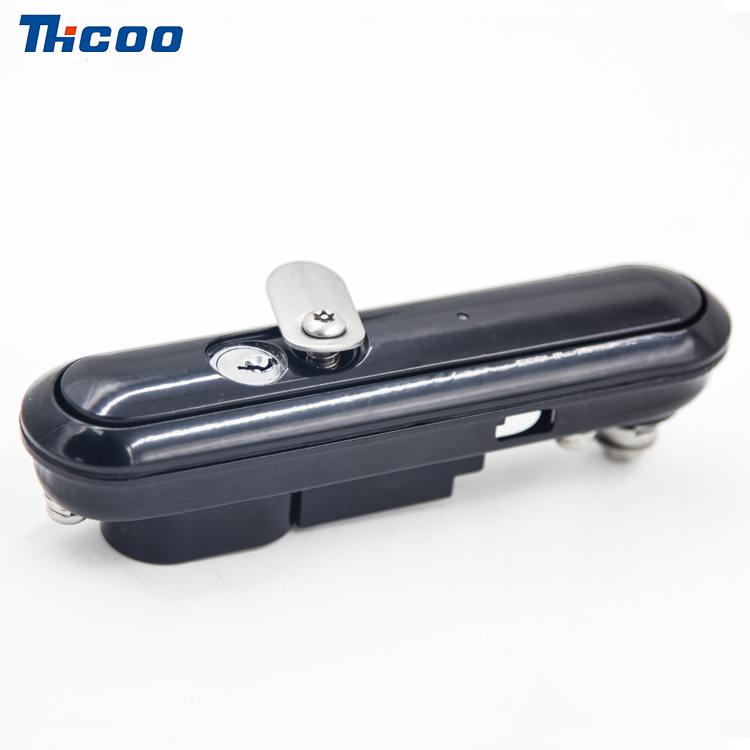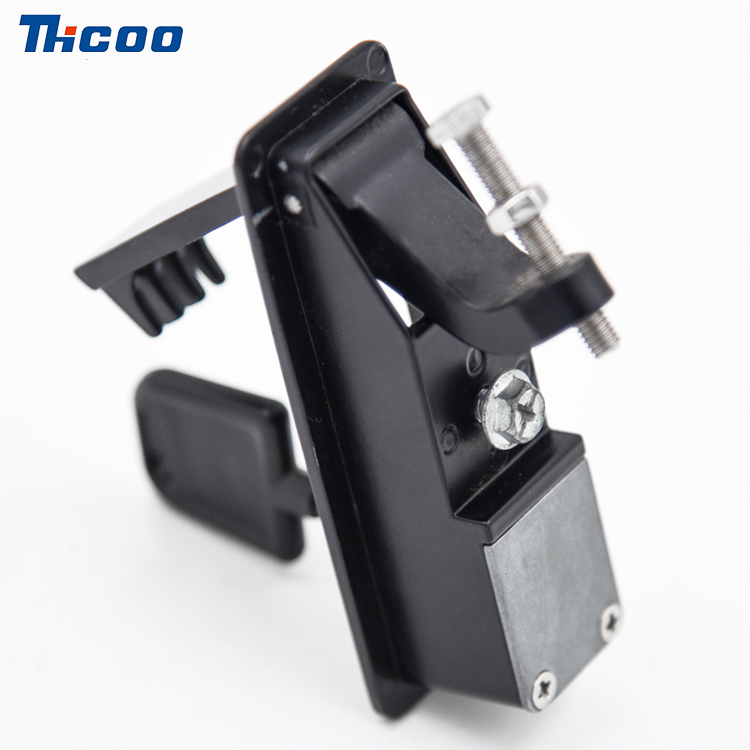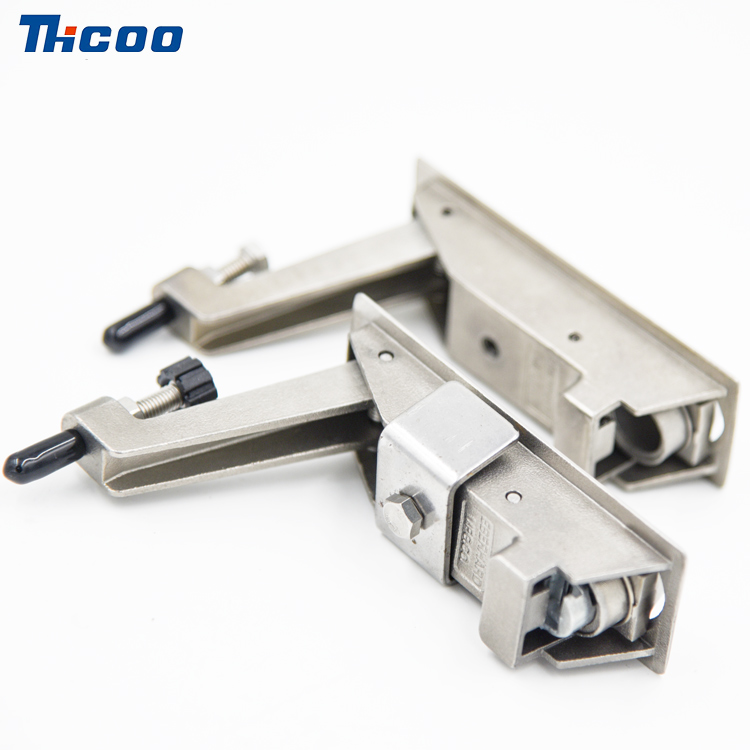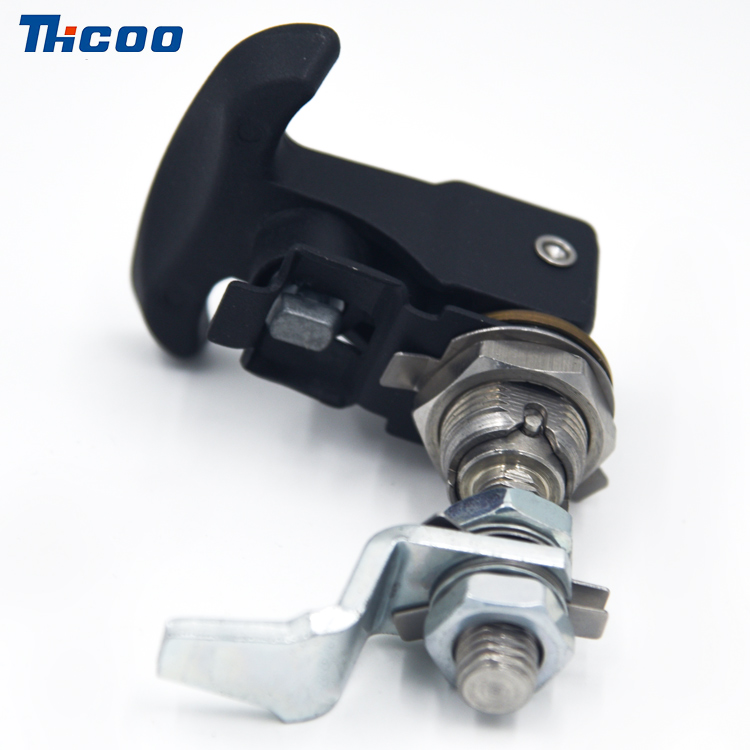RV Locks Explained in Plain Terms
Content
1. Purpose-Built Security
Vehicle-Specific Design: Made to handle road vibrations, weather extremes, and theft attempts.
Dual Protection: Secure both against break-ins and accidental openings while driving.
2. Common RV Lock Types
Type Where Used How It Works
Entry Door Locks Main RV entrance Keyed deadbolt + latch combo; often double-bolted (top/bottom)
Compartment Locks Storage bays, generators Flush-mounted key cylinders; turn 90° to release latch
"Bike Lock" Latches Exterior storage tubes Padlock-style shrouded hasp; blocks latch movement
Emergency Exit Bedroom windows/hatches Push-bar inside + keyed outside; always labeled "Emergency Exit"
3. Key Features
Weatherproofing: Rubber gaskets prevent rain/snow from jamming mechanisms.
Vibration Resistance: Reinforced springs/gears that won’t shake loose on highways.
Keyed Alike Systems: Single key operates all locks (entry, storage, etc.).
Theft Deterrents:
Shrouded keyholes (can’t pick or drill easily).
Bolt materials hardened against cutting.
4. Failure-Prone Issues
Freeze-Ups: Ice locks mechanisms in cold weather (use de-icer spray).
Grime Buildup: Dirt/sand grits up tumblers (clean 2x yearly).
Key Snapping: Thin keys bend if forced (lube hinges first!).
Stripped Gears: Plastic internals crack in cheap locks.
5. Smart Upgrades
Keyless Keypads: Enter codes instead of keys (avoid in sub-zero climates).
Remote Monitoring: Wi-Fi locks alert phone if tampered with.
Reinforced Strike Plates: Steel plates screwed through door frame.
6. Maintenance Musts
Lubricate Quarterly: Silicone spray ONLY (WD-40 attracts dirt).
Check Alignment: Misaligned latches strain bolts (adjust strike plates).
Spare Key Hack: Hide keys inside bumper frame (not under mats!).
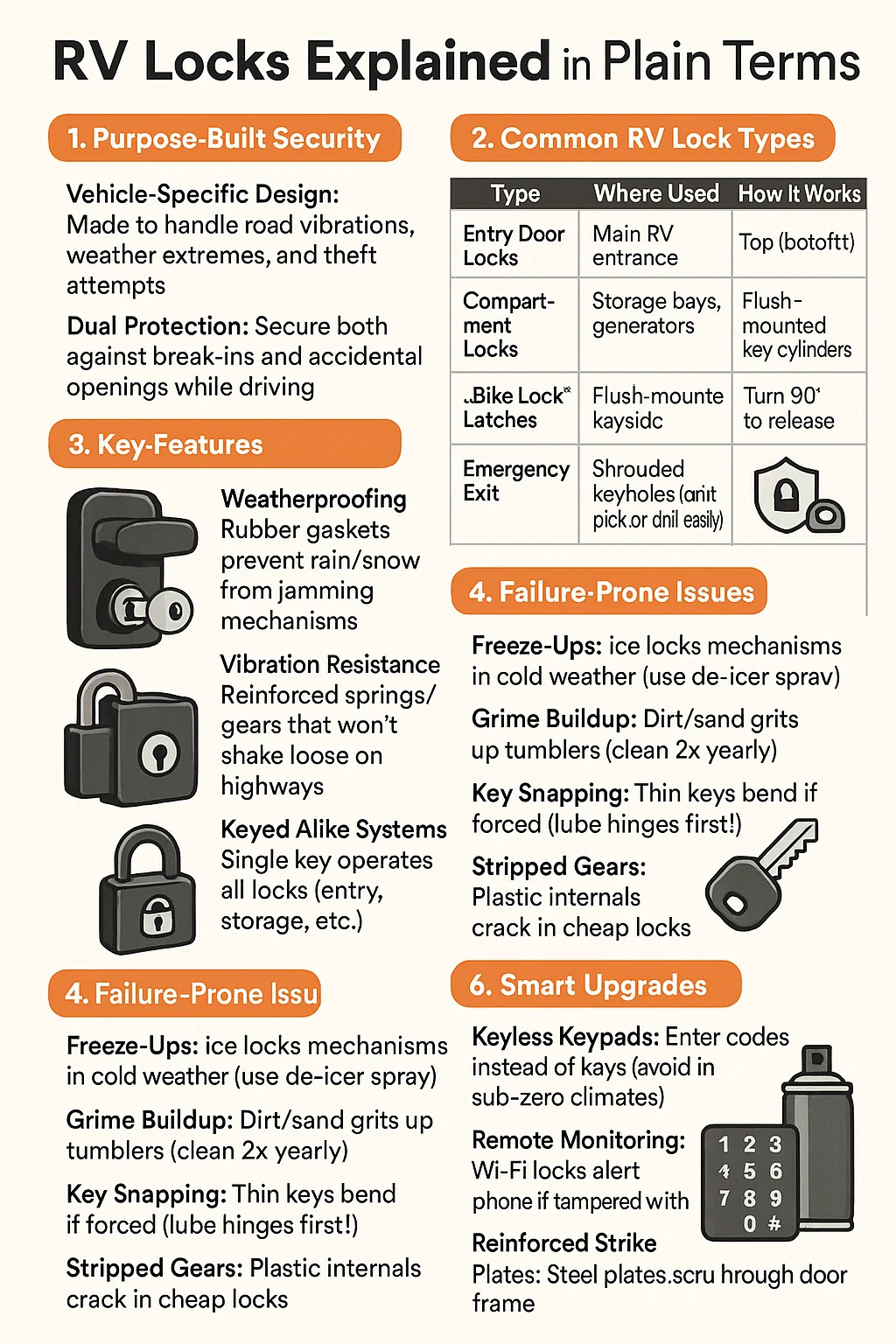

 English
English Deutsch
Deutsch 简体中文
简体中文 languages
languages 

